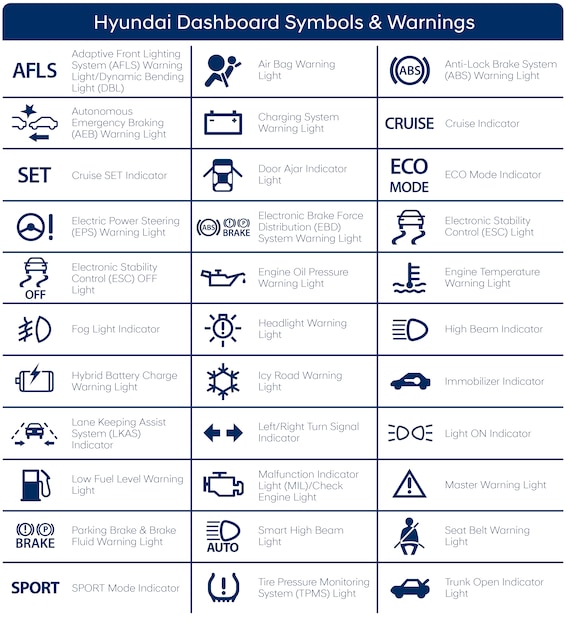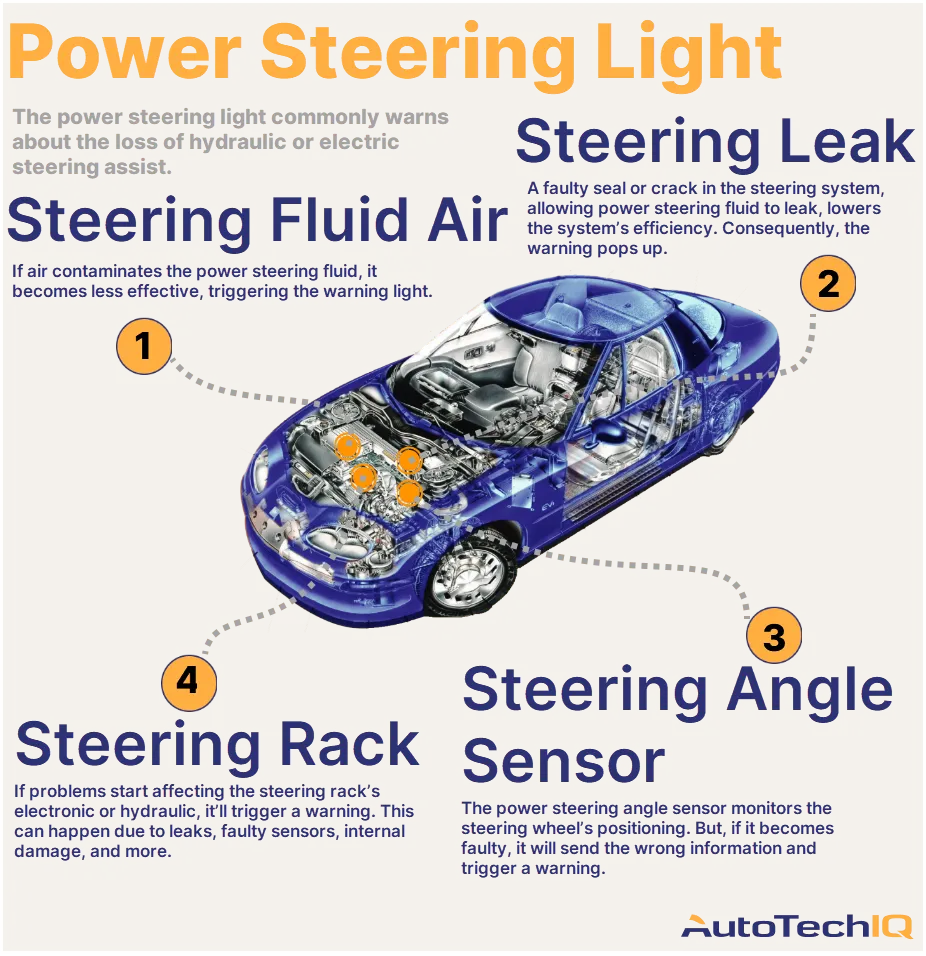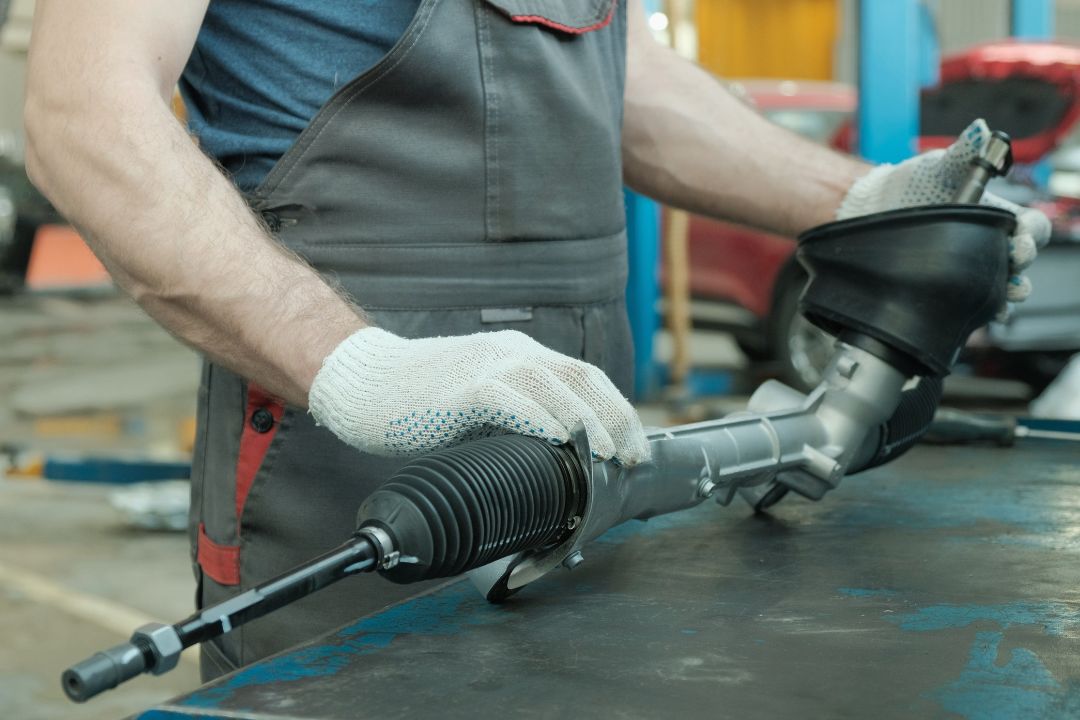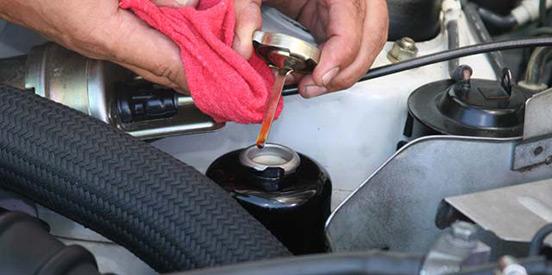What Signs Can Indicate Damage to Steering Components: Essential Warning Signals
Common signs of steering component damage include slow steering response, hard steering, steering vibration, leaking steering fluid, difficulty turning, loose steering, noise when turning, and unusual noises. Addressing these issues promptly can prevent costly and hazardous situations on the road.
In commercial motor vehicles (CMVs), steering breakdowns typically manifest as looseness or vibrations in the steering wheel, making it harder to turn the wheel. Identifying and resolving these signs promptly is vital for maintaining road safety and preventing further damage to the steering system.
Stay vigilant for these warning signs to ensure a smooth and safe driving experience.

Common Signs Of Steering Component Damage
Is your steering wheel feeling loose or vibrating? Are you hearing unusual noises or experiencing difficulty turning? These are common signs of steering component damage. Don’t ignore these warning signals, as they could lead to costly and dangerous outcomes. Keep an eye out for these symptoms to ensure a safe driving experience.
Slow Steering Response
Noticing delays in your vehicle’s steering input can indicate damage to steering components.
Hard Steering
If you find it difficult to turn the steering wheel smoothly, it could signal issues with the steering system.
Steering Vibration
Feeling vibrations in the steering wheel while driving may point towards steering component damage.
Leaking Steering Fluid
Visible leaks of steering fluid under your vehicle can be a sign of a steering system problem.
Difficulty Turning
Experiencing challenges or resistance when turning the steering wheel suggests potential steering component damage.
Loose Steering
If the steering wheel feels loose or has excessive play, it could indicate issues with the steering components.
Noise When Turning
Hearing unusual noises such as screeching or squealing when turning the steering wheel may signal steering system problems.
Potential Causes Of Steering System Failure
If you can sense your steering wheel feeling loose and experiencing vibrations while turning, these could indicate potential issues in the steering components. Symptoms may include difficulty in steering, vibrations, noises, leaks, and fluid discoloration, which can hint at steering system failure.
Stay vigilant to prevent costly consequences on the road.
Component Wear And Tear
Worn components lead to steering issues.
- Sloppy steering wheel movement
- Difficulty in changing direction
Faulty Tie Rods
Tie rods play a crucial role in steering.
- Significant wear in tie rods
- Loose steering wheel
Steering Rack Issues
Steering rack problems impact steering performance.
- Whining noise while turning
- Stiff steering response
Identifying Faulty Steering Systems
Signs of steering system damage include slow response, stiff steering, unusual noises, leaks, vibration, and difficulty turning. These indicators can help identify faulty steering components before they lead to costly and hazardous consequences. Stay safe on the road by recognizing and addressing these warning signs promptly.
Whining Noise When Turning
If you hear a whining noise when turning the steering wheel, it can indicate damage to the steering components. This noise may be due to low power steering fluid or a faulty power steering pump. Addressing this issue promptly can prevent further damage to the steering system.
Stiff Steering Wheel
A stiff steering wheel is a clear indication of potential steering system damage. It may be caused by issues such as low power steering fluid, a failing power steering pump, or problems with the steering gear. Promptly addressing this issue is crucial for safe and efficient vehicle operation.
Squealing Noise At Startup
If your vehicle produces a squealing noise when starting up, it could be a sign of steering system problems. This noise is often related to the steering belt or power steering system. Timely inspection and maintenance can prevent further complications and ensure smooth vehicle operation.
Leaking Steering Fluid
Leaking steering fluid is a clear indicator of steering system damage. A reddish puddle underneath your car may signify a leak in the power steering system. Identifying and fixing the source of the leak is essential to maintain proper steering functionality and prevent potential hazards on the road.

Symptoms Of Bad Steering And Suspension
Signs of damage to steering components can include slow steering response, steering vibration, difficulty turning, loose steering, and unusual noises. These symptoms indicate potential problems with the steering system and should be promptly inspected and repaired to ensure safety while on the road.
Uneven Tire Wear/inflation
One of the key signs indicating damage to steering components is uneven tire wear or inflation issues. When the steering system is compromised, it can affect the alignment and cause the tires to wear unevenly. This can be observed by examining the tread pattern on the tires, where certain areas may be more worn than others.
Additionally, improper inflation of tires can also be a symptom of bad steering and suspension. If the steering system is not functioning properly, it can lead to uneven weight distribution on the tires, resulting in uneven inflation. This can be detrimental to the overall performance and lifespan of the tires.
Clunking Or Grinding Noises
Another clear indication of bad steering and suspension is the presence of clunking or grinding noises. When driving, if you hear unusual sounds coming from the steering system, it is likely that there is damage to the components.
These noises can be caused by various issues, such as worn-out ball joints, damaged tie rods, or loose steering linkage. Ignoring these sounds can lead to further damage and pose a safety risk while on the road.
Excessive Wear & Tear
Excessive wear and tear on steering components can be a sign of underlying damage. This can be observed by physically inspecting the steering system for any visible signs of wear, such as worn-out bushings, corroded parts, or leaking seals.
Furthermore, if you notice that the steering wheel feels loose or has excessive play, it could be an indication of worn-out components. A properly functioning steering system should provide a firm and responsive steering feel, so any noticeable decrease in performance is a cause for concern.
It is important to address any symptoms of bad steering and suspension promptly to avoid further damage and ensure the safety of both the driver and passengers. If you experience any of these signs, it is recommended to have your vehicle inspected by a qualified mechanic to identify and resolve any steering component issues.
Diagnosing Electric Steering System Issues
When it comes to diagnosing issues with the electric steering system, it is essential to pay attention to the warning signs. Addressing these indicators promptly can help prevent expensive repairs and ensure safe driving conditions. In this section, we will discuss the common signs that could indicate a failure in the electric steering system and the use of scan tools for diagnosis.
Indicators Of Electric Steering System Failure
If you experience any of the following signs, it may indicate damage to the electric steering components:
- Slow steering response
- Hard steering
- Steering vibration
- Leaking steering fluid
- Difficulty turning
- Loose steering
- Noise when turning
- Unusual noises
- Fluid leaks
These indicators should never be ignored as they can be an indication of a failing electric steering system. Taking immediate action is crucial to avoid accidents and prevent further damage to the steering components.
Using Scan Tools For Diagnosis
Modern vehicles are equipped with advanced onboard diagnostic systems, and these scan tools can be incredibly helpful in diagnosing electric steering system issues. By connecting a scan tool to the vehicle’s OBD port, mechanics and technicians can access valuable data and trouble codes related to the steering system.
The scan tool provides real-time information about the electric steering components, allowing for a quick and accurate diagnosis. This information includes the steering angle sensor readings, motor current draw, and any detected faults or errors in the system.
Once the scan tool identifies the specific problem, technicians can then proceed with the necessary repairs or replacements of the faulty components. Utilizing scan tools not only saves time but also helps in maintaining the overall health and functionality of the electric steering system.
In conclusion, diagnosing electric steering system issues requires a keen eye for the warning signs and the use of advanced scan tools. Being aware of the indicators of failure and utilizing scan tools can help prevent steering system breakdowns and ensure a safe driving experience.

Frequently Asked Questions On What Signs Can Indicate Damage To Steering Components
What Signs Can Indicate Damage To Steering Components On A Cmv?
Signs of damage to steering components on a CMV include slow steering response, hard steering, steering vibration, leaking steering fluid, difficulty turning, loose steering, noise when turning, and unusual noises. By addressing these signs promptly, drivers can prevent costly and dangerous outcomes.
What Could Indicate Damage To Steering System Components?
Signs of damage to steering system components include slow steering response, hard steering, steering vibration, leaking steering fluid, difficulty turning, loose steering, noise when turning, and unusual noises.
What Signs Can Indicate Damage To Steering Components Tractor Trailer?
Possible signs of damage to steering components in a tractor-trailer include slow steering response, hard steering, steering vibration, leaking steering fluid, difficulty turning, loose steering, and unusual noises. These signs indicate potential issues that should be addressed to avoid costly and dangerous outcomes.
How Can You Identify If The Steering System Faulty?
Signs of steering system faults include slow or stiff steering, squealing noises, leaks, difficulty turning, vibrations, and loose steering wheels.
Conclusion
If you notice any of these signs in your steering system, it’s crucial to address them promptly to prevent costly repairs and ensure your safety on the road. By recognizing and acting upon these warning indicators, you can maintain the integrity of your steering components and enjoy a smooth driving experience.
Stay vigilant and prioritize the maintenance of your vehicle’s steering system to prevent any potential hazards.






